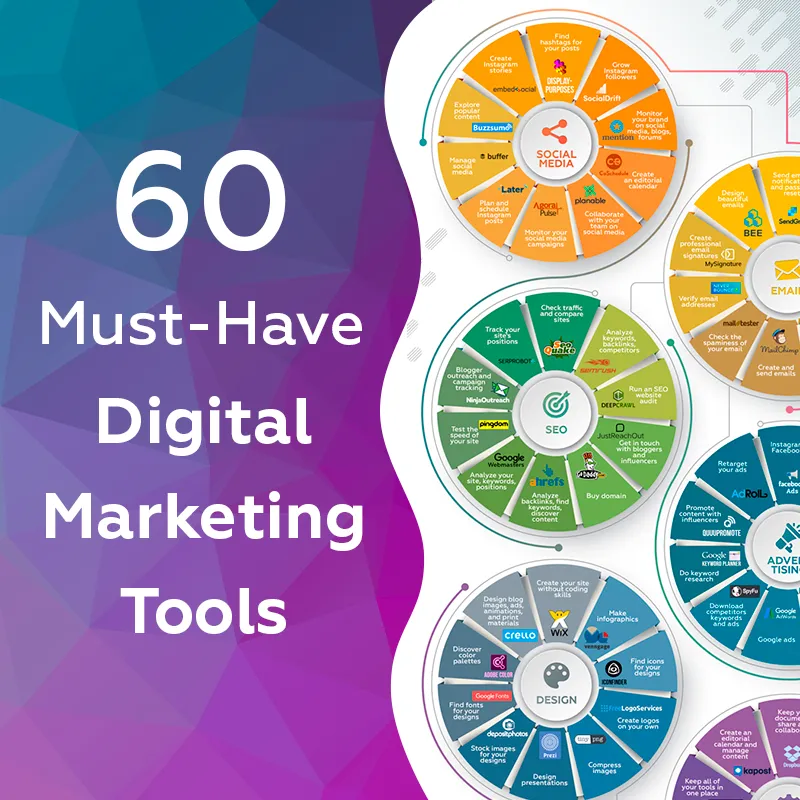Are You Doing Things Better than Your Competitors? Interview with Marketing Expert JP Castlin
JP Castlin is one of the top marketing experts you should keep an eye on in 2020. He is the CEO at Rouser, an international strategic consultancy firm from Stockholm. JP is both a marketer and a lawyer with a natural talent for strategic thinking. He says this is what usually puts him on par with the Devil in most people’s eyes.
JP is also a columnist at Marketing Week where he gladly shares his broad competence with audiences. We talked to JP this spring to find out more about the strategy-first approach in business, shifts in marketing because of the pandemic, as well as insightful literature to read for those interested in the topics we’ll cover today.
On strategy-first approach, risks, and doing things better than your competitors
Brands, contrary to popular belief, don’t act in vacuums. They act within competitive spaces.
Consequently, the performance that matters isn’t absolute, but relative. This, effectively, is why the key to success isn’t doing things well, but whether one is doing things better than one’s competitors. To illustrate, a 5% increase in revenue can be either amazing or utterly unacceptable depending on whether the market grew, how key competitors did, etc.
However, any strategic framework is pointless if the strategist does not understand the context, both internal and external, in which she or he acts. Consequently, the first step in any process should always be diagnostics. Once performed, everything else follows, but what that is highly depends on the company lifecycle stage within its vertical. A lot of, if not most, companies act the way they do because they have to. Sometimes, it means you should lean heavily on deliberate strategy and its strategic plans. Sometimes, it means a larger focus on emergent strategy, which isn’t so much about plotting the course as discovering it along the way.
The key to success isn’t doing things well, but whether one is doing things better than one’s competitors.
Risk is an inherent aspect of doing business. Strategy can never eliminate it in its entirety. Rather, strategy is about improving the likelihood of a certain outcome (only charlatans and idiots guarantee it) and, ideally, that outcome will in turn help the organization win in the marketplace. When it comes to causal ambiguity, it can be strategically managed to sustain a competitive advantage – making it more difficult for competitors to understand (and thereby replicate) the relationship between a firm’s inputs and its outputs.
On building a positive first impression and running a successful marketing campaign
In short, due to something called a halo effect, we make up all kinds of conclusions about people based on their appearance. Once we have, confirmation biases kick in and we judge their subsequent behavior accordingly.
For brands, I’d say that the very baseline for making a good first impression is having a product or service that is worth its money, be it in subjective or objective terms.
Of course, a previous first impression of the brand, for example via communication, can be argued to have an effect on that, but anyone making such a case must also answer whether sales are strong because the brand is or the brand is strong because the sales are. Usually, it’s the latter, not the former.
Whether an ad campaign turns out to be successful or not is never about any one thing. Rather, it always hinges on a myriad of different factors, ranging from luck (i.e. market randomness in your favor) and competitor moves within the campaign timeframe, to creative excellence, distinctiveness and a solid media plan that focuses on net, not gross, reach. On one hand, you must ensure that people see your ad. On the other, you must ensure that they actually recognize your brand. Hopefully, they will remember it too.
You must ask yourself whether sales are strong because the brand is or the brand is strong because the sales are.
Visuals are important, not least for distinctiveness. Consumers don’t make choices based on some deeper meaning of what they see, such as that red would be associated with energy and therefore the product would make them energetic, or that an updated font would signal a vibrant and vital company. However, they will buy things that they recognize. Tropicana, to take a famous example, learned this the hard way. They changed their packaging, most likely because someone somewhere had gotten bored with their old design, and the end result was a decline of around 20% in sales in two months. They changed it back, but by then the change had already cost the brand upwards of $65 million.
How marketing and business will change later in 2020
Marketing will have to change if the business’ context does. There is a lot of talk at the moment that all brands should increase their broad advertising spend, which is not merely tone deaf but utterly detached from strategic reality. If you are in survival mode, you will not merely eat the fruits on the apple tree instead of water it, you’ll cut the tree down for firewood if you have to. Or to put it in blunt business terms: if your cash flow is decreasing so quickly that you will struggle to make it to the end of the day, there is no point in investing in stabilization of future cash flows for a better tomorrow.
The shift that marketing leaders should do at the moment is to first and foremost reassess their strategies. If their context demands a change – which it may or may not do, it’ll be on a case by case basis – they will have to change and move their budget accordingly.
Long-term, things will stabilize and in broad terms go back to the way they were. Human behavior takes a long time to change. There may be an acceleration of trends, e.g. shift to online services, of course. Some change will be inevitable. But the further we get from the pandemic, the more things will normalize, it’s just human nature. Marketing will follow suit. The same market rules and patterns still apply and will likely continue to do so.
The further we get from the pandemic, the more things will normalize, it’s just human nature.
The kind of business that comes out of this crisis successfully – though that’s a relative term – is the one that was well-prepared and/or lucky. Contrary to popular belief, the current pandemic is not a black swan (anyone claiming it is, clearly hasn’t read Nicholas Taleb’s book as such events are explicitly mentioned as being white swans), but one that was more or less likely to happen. Of course, many companies mistake frequency for intensity and failed to build sufficient buffers. Yet at the same time, it is difficult to build a long-term buffer for a 90-95% revenue loss, which some verticals are currently seeing. So, the companies that will come out in greatest fiscal fitness are those that were strong to begin with or just had things fall in their favour.
On insightful literature every marketer should read
There are certain books that should be required reading for anyone working in marketing. First and foremost, any marketer that hasn’t read How Brands Grow by Byron Sharp needs to go to their local bookshop and pick it up immediately. I’m also a massive fan, as many know, of The Halo Effect by Phil Rosenzweig. Though it isn’t a book on marketing, it is a game-changer that will help you understand all the mistakes people make in analysis (which, of course, is an integral aspect of strategy). Good Strategy, Bad Strategy by Richard Rumelt is very good, as is The Rise and Fall of Strategic Planning by Henry Mintzberg. Lastly, if you are a more advanced strategist, I’d recommend picking up Strategy Synthesis by Bob de Wit. It’s a masterclass in business strategy, but does presume you know the topic well.
Find more insights and ideas in the Rouser Manifesto
The idea behind the Manifesto has always been to put our views of strategy in writing – it’s an exercise to hone our thinking, not a piece of content marketing. Those thoughts will, as they should, evolve over time. Consequently, the document needs to be updated.
The 2020 Manifesto will be our best one yet. Of course, it’s not as if I’d say otherwise, but I genuinely feel it’s a significant step up. That’s not to say our past ones haven’t been solid, in fact, market feedback has been absolutely astonishing and we are incredibly proud of them. But the new one goes much more in-depth on a lot of practical strategic matters such as global strategy, departmental alignment, strategic drift, and lifecycle stage differences.













